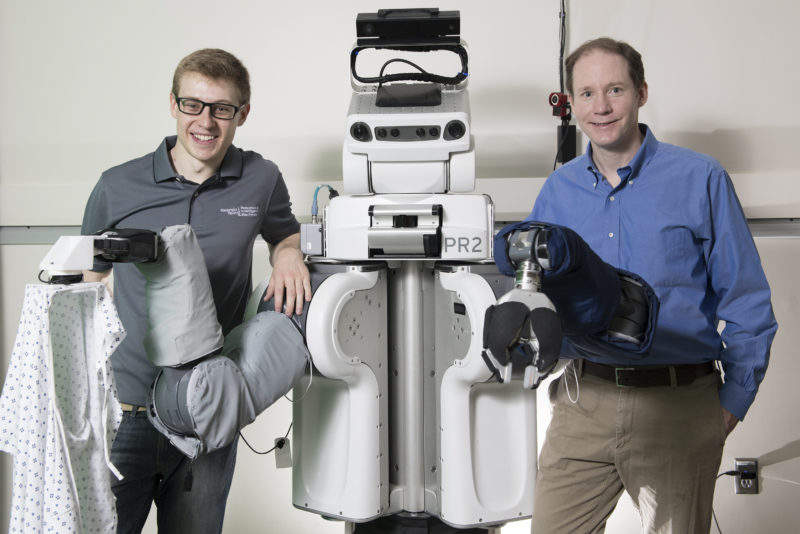
Researchers from the Georgia Institute of Technology have created a robot that could assist patients when dressing.
The PR2 robot analysed around 11,000 simulated examples of a robot putting a hospital gown onto a human arm and, using machine learning, taught itself how to do it successfully on a real human in a day.
Some of the examples that the PR2 learnt from were flawless, while others saw the robot apply dangerous force to the arm.
The variation of these examples allowed the PR2’s neural network to estimate the forces that should be applied to a human and in a sense learn what it feels like to be the human receiving assistance.
“People learn new skills using trial and error. We gave the PR2 the same opportunity,” said Georgia Institute of Technology lead author Zackory Erickson.
“Doing thousands of trials on a human would have been dangerous, let alone impossibly tedious. But in just one day, using simulations, the robot learned what a person may physically feel while getting dressed.”
How well do you really know your competitors?
Access the most comprehensive Company Profiles on the market, powered by GlobalData. Save hours of research. Gain competitive edge.

Thank you!
Your download email will arrive shortly
Not ready to buy yet? Download a free sample
We are confident about the unique quality of our Company Profiles. However, we want you to make the most beneficial decision for your business, so we offer a free sample that you can download by submitting the below form
By GlobalDataAll of the data allowed the PR2 to predict the consequences of moving the gown in various ways, such as motions resulting in a tight fit.
After successful simulations, the robot was able to slide a gown onto a human arm using its sense of touch, rather than vision, to perform the task.
“The key is that the robot is always thinking ahead,” said Georgia Tech Department of Biomedical Engineering associate professor Charlie Kemp. “It asks itself, ‘if I pull the gown this way, will it cause more or less force on the person’s arm? What would happen if I go that way instead?'”
The researchers varied the robot’s timing and allowed it to think as much as a fifth of a second into the future while planning its next move. Less than that caused the robot to fail more often.
“The more robots can understand about us, the more they’ll be able to help us,” said Kemp. “By predicting the physical implications of their actions, robots can provide assistance that is safer, more comfortable and more effective.”
Currently, the robot is only able to put the gown on one arm in around ten seconds, with the team saying that fully dressing a person requires further research.



